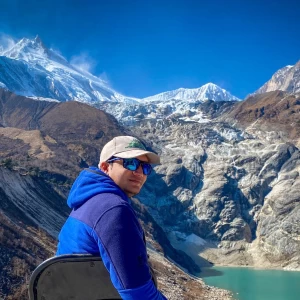Trek the Himalayas with us with every cost breakdown given here.
How Much Will It Cost To Trek To The Himalayas?
Table of Contents
Trekking in the Himalayas is a dream of many adventure seekers. The towering peaks, serene landscapes, and natural beauty make hiking the Himalayas unforgettable. The cultural richness also adds to the experience.
For those planning to trek the Himalayas, understanding the cost is crucial. The expenses can vary based on the trek's length, difficulty, and level of comfort desired. This article will help you understand the cost of trekking to the Himalayas in Nepal.
On average, the cost to trek to the Himalayas in Nepal ranges from $400 to $4,500. This includes permit costs, guides, accommodation, local food, travel insurance, and transportation. Prices can be higher or lower depending on the trek's duration and the services chosen.

Factors That Influence the Cost of a Himalayan Trek
Several factors can impact the overall cost of trekking in the Himalayas. Understanding these can help you plan your Himalayan trek more effectively. Let's explore the key elements that determine how much you might spend.
The Trekking Route and Duration
The choice of a trekking route greatly impacts the cost. Popular routes like Everest Base Camp and Annapurna Circuit are often more expensive. This is due to higher demand. These Himalaya treks usually offer a range of amenities and require permits. These factors add to the overall cost. On the other hand, lesser-known routes might be cheaper. However, they could involve basic accommodations and fewer services.
The trekking length and duration also influence the cost. Longer treks naturally incur more expenses for food, lodging, and permit cost. For instance, a typical Everest Base Camp trek lasts about 12 to 14 days. Alongside, shorter Himalayan hikes like the Ghorepani Poon Hill trek take only 4 to 5 days. The longer you hike the Himalayas, the more you should budget for.

Type of Accommodation: From Tea Houses to Luxury Lodges
Accommodation is a key factor in determining the cost. Basic tea houses are common along most Himalayan treks. They offer simple rooms with shared facilities. These are budget-friendly and provide a true local experience. Staying in tea houses keeps the costs low. It is a great option for budget-conscious travellers.
Luxury lodges are available on certain popular routes if you prefer more comfort. For example, the luxury Everest Base Camp trek offers these options. These lodges offer private rooms with attached bathrooms, hot showers, and even Wi-Fi. Naturally, staying in luxury lodges increases the overall cost of trekking in the Himalayas. Your accommodation choice will significantly impact your trek to the Himalayas budget. Whether you choose basic tea houses or luxurious lodges, the costs will vary.
Guided Treks vs. Independent Treks
Deciding between a guided and an independent trek is crucial when planning. Guided treks typically cost more due to the additional services included. These may involve a professional guide, porter, and sometimes even meals and accommodations. A guide can enhance your experience by offering local knowledge and insights. They also ensure your safety, especially on challenging routes. Hiring a porter to carry your luggage also makes hiking the Himalayas easier. But this adds to the overall cost.
On the other hand, trekking independently is a more budget-friendly option. Without a guide or porter, you'll save money, but you’ll need to plan your route, carry your gear, and navigate on your own. Independent treks might be suitable for experienced trekkers familiar with the region. For those new to Himalayan trekking, hiring a guide can be worth the extra cost. A guide provides a safer and more enjoyable adventure.
Peak Season vs. Off-Season Trekking

The timing of your trek can significantly impact the cost. Trekking during the peak season is more expensive. This period usually falls in spring (March to May) and autumn (September to November).
During these months, the weather is ideal. The trails are bustling with fellow trekkers. The increased demand leads to higher prices for accommodations, guides, and trekking permits. This makes it the most costly time to hike the Himalayas.
Trekking during the off-season can be more budget-friendly. This includes winter (December to February) and the monsoon (June to August). Prices for accommodations and services are generally lower during the off-season. This is because fewer people trek the routes during these times. However, the weather can be challenging during the off-season. Winter brings colder temperatures, while the monsoon features heavy rains. Choosing the off-season can save money but requires preparation for less favourable conditions.
Breakdown of Average Costs for Popular Treks in the Nepal Himalayas
Now that you understand the factors influencing trekking costs, it’s helpful to know what you might actually spend. Let’s look at a breakdown of average costs for some of the most popular treks in the Nepal Himalayas. This will give you a clearer idea of what to budget for your adventure.
Everest Base Camp Trek

The Everest Base Camp trek is one of the most popular Himalayan treks, and its costs reflect this. On average, the cost to trek to the Himalayas for this route ranges from $1,000 to $2,500. This includes permit cost and accommodation in tea houses. Hiring a guide might cost around $35 per day, while a porter typically charges $25 per day. We highly recommend getting travel insurance as well.
Consider the Everest Three Passes Trek or the Gokyo Lakes Trek if you're interested in a more challenging trek. These routes can be more expensive due to their longer durations and higher difficulty levels. Expect to spend between $1,600 and $3,000 for these treks. This range covers typical Nepal trekking costs like permits, accommodation, and guide or porter fees. Both options offer incredible scenery and a deeper trekking experience.
Annapurna Circuit Trek
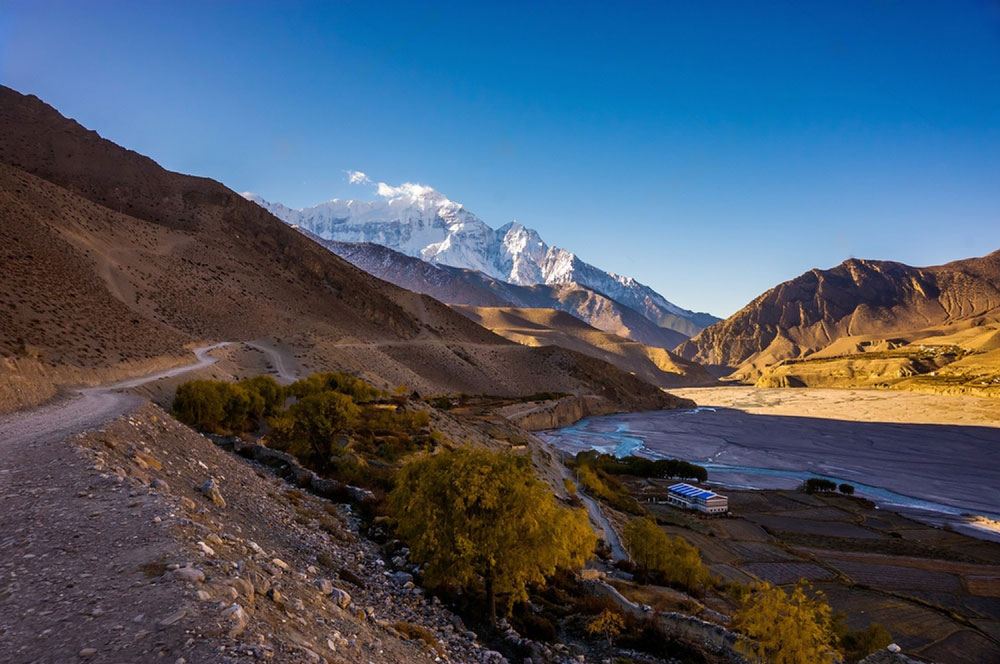
The Annapurna Circuit Trek is another popular option for trekking in the Himalayas. The average cost to trek the circuit ranges from $1,000 to $2,000. This includes permits like the Annapurna Conservation Area Permit (ACAP) and the TIMS card. Accommodation in tea houses along the route is affordable.
For those seeking more adventure, extending the trek to include Tilicho Lake or Annapurna Base Camp increases the cost by about $300 to $500. This is due to the additional days and logistics involved.
The Nar Phu Valley is a restricted area within the Annapurna region, requiring a special permit costing around $100 per week. Also include travel insurance. This restricted area trek adds to the overall trek cost. However, it offers a unique and less crowded Annapurna region trekking experience.
Upper Mustang Trek
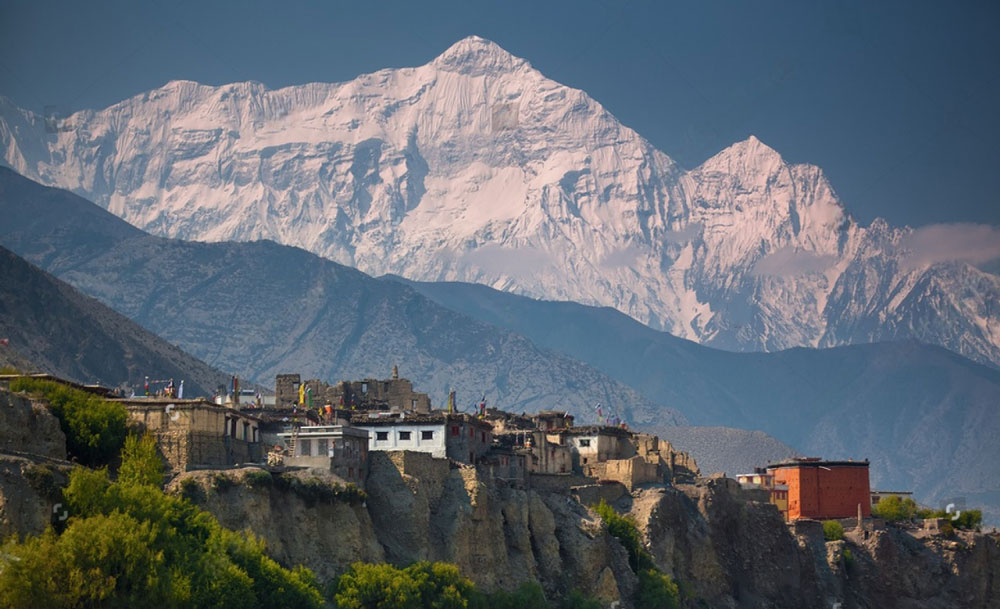
The Upper Mustang Trek offers a unique Himalayan trekking experience. It features distinct Tibetan culture and arid landscapes. Due to its location in a restricted area, the cost to trek to the Himalayas here is higher. The special permit required for the Upper Mustang trek costs $500 for the first 10 days, adding significantly to your budget. Accommodations are typically in tea houses.
In addition to the permit, other Nepal costs include transportation to the starting point in Jomsom. This may involve domestic round-trip flights from Pokhara, which cost about $200 one way. Guided treks are recommended due to the cultural significance and remote location, with guide fees of around $35 to $40 per day. The total cost for the Upper Mustang Trek can range from $2,000 to $3,500. This depends on your preferences and the duration of your trek.
Manaslu Circuit Trek
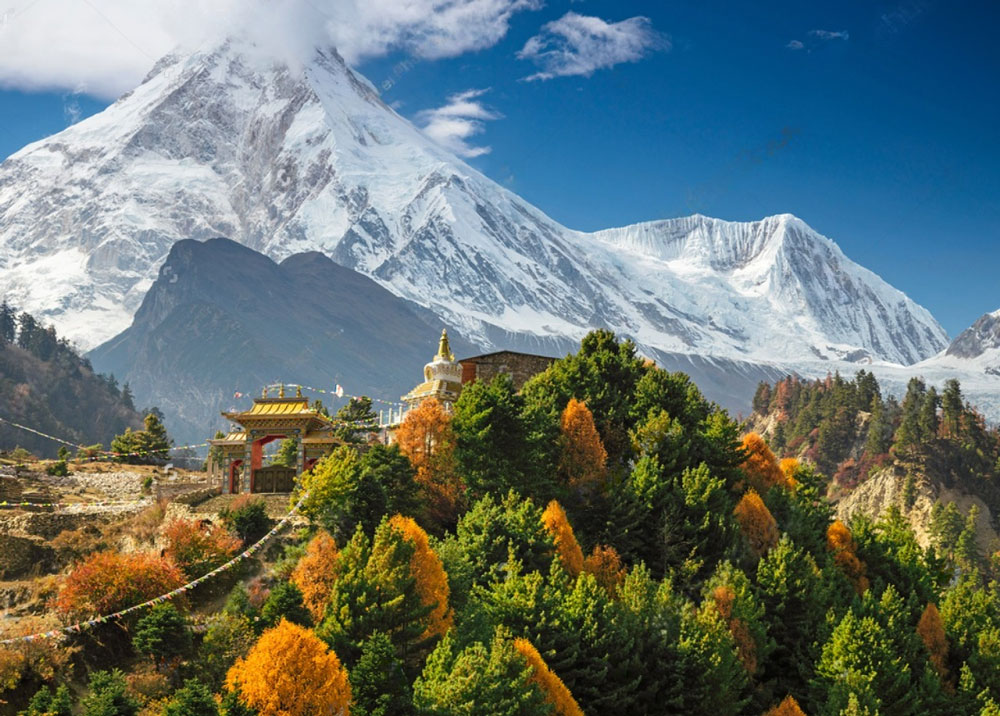
The Manaslu Circuit Trek is a spectacular adventure that requires specific permits. This makes it one of the more expensive treks in the Himalayas. The restricted area permit for Manaslu costs around $100 per week. Additionally, the Annapurna Conservation Area Permit and Manaslu Conservation Area Permit are required. Each permit costs about $30.
If you add the Tsum Valley trek to your itinerary, costs will increase. The special permit for Tsum Valley is around $40. Combining both treks typically raises the total cost to trek the Himalayas to between $2,500 and $3,500. This includes the extended duration and additional logistics involved. Despite the higher trek cost, both treks offer a unique and rewarding Himalayan experience.
Additional Costs to Consider
As you plan your Nepal trekking, there are a few additional expenses to keep in mind. Beyond the basic trek costs, other factors can affect your budget. Let's look at some of these extra costs to help you prepare fully.
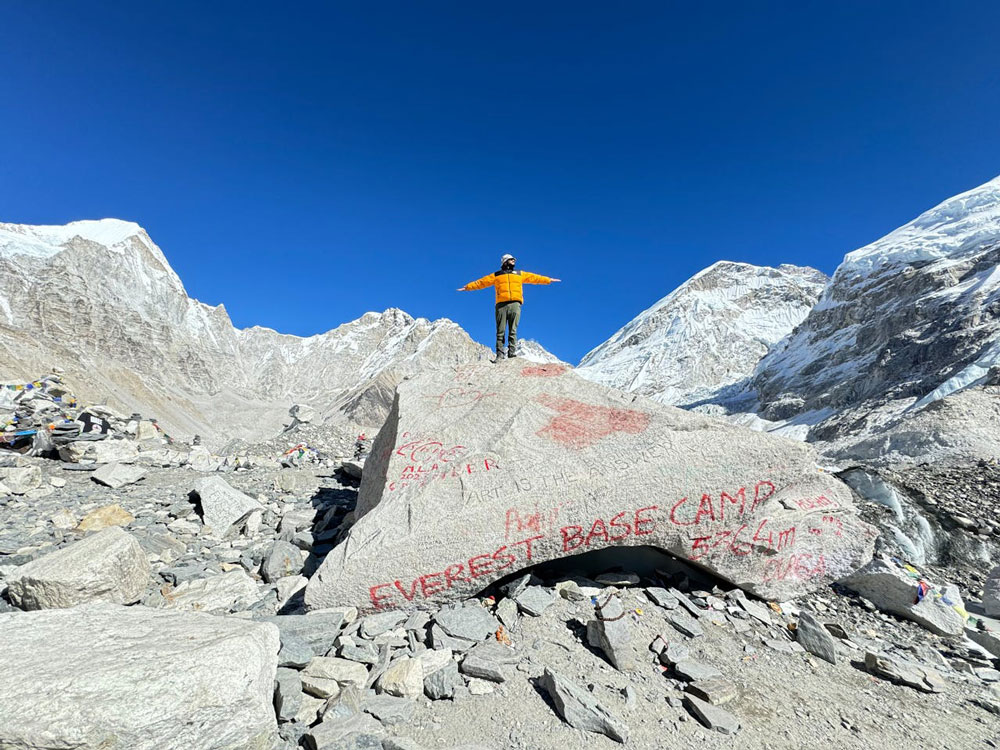
Permit Fees and Entry Passes
When trekking in the Himalayas, various permits and entry passes are required. For most Himalaya treks, the TIMS card (Trekkers' Information Management System) is necessary and costs around $20. Additionally, national park fees or conservation area permits are needed. For instance, the Annapurna Conservation Area Permit (ACAP) costs about $30.
Different regions may have specific requirements. The Mount Everest region requires a Sagarmatha National Park permit including a Khumbu Pasang Lhamu RM permit costing $50. Restricted areas like Manaslu or Upper Mustang require special permits. They are often more expensive. These permits are crucial for protecting the environment and managing tourism in the Himalayas.
Transportation Costs
Transportation is another important cost when trekking in the Himalayas. The thrilling flight to Lukla, a common starting point for Everest region treks, typically costs $217 one way. These flights are essential for reaching remote trailheads quickly. Additionally, private jeep rental for reaching more distant starting points can range from $100 to $200. The cost depends on the distance and group size.
Local Buses or microbuses to various trailheads, such as those for the Annapurna or Manaslu treks, cost between $10 and $30. These options are more budget-friendly but take longer than flying. Overall, transportation costs will vary based on your entire trek and chosen starting points. Planning ahead can help manage these expenses.
Equipment and Gear
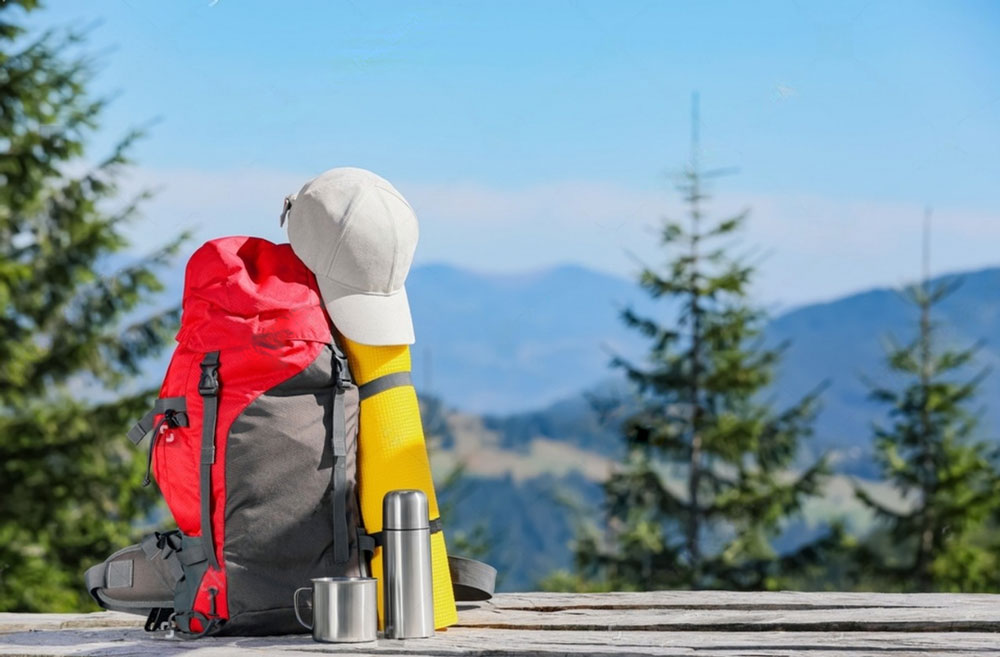
When preparing for a trek, having the right equipment is crucial. Depending on your trek, the cost to trek the Himalayas includes either renting or buying gear. Renting gear such as sleeping bags and trekking poles can be cheaper. If you prefer buying gear, high-quality trekking clothing and equipment can range from $200 to $500, depending on the brand and quality.
Essential items include warm clothing, sturdy hiking boots, and a good-quality backpack. Renting is a good option if you trek infrequently, while purchasing is better for frequent trekkers. Ensure your gear is suitable for the conditions. Proper equipment enhances safety and comfort during your Himalayan trek.
Additional Meals and Drinks than provided by the agency
While trekking, you may need to budget for additional meals and drinks not provided by your trekking agency. On average, extra meals and drinks can cost about $10 to $20 per meal. In remote areas, prices can be higher due to limited availability.
If you book your trek with Himalayan Scenery Treks and Expedition, you can customise your meal plan. This includes options for meals in cities before the trek and during the hike in the mountains. Tailoring your meal plan can help manage costs and ensure you have the food you need.
The Value of Comfort: Luxury Options in the Himalayas
For those who prioritise comfort during their trek, there are luxury options available. These choices provide extra amenities and a higher level of service. Let’s explore what luxury options in the Himalayas can offer and how they compare to standard trekking experiences.
Luxury Lodges

For those seeking extra comfort during their trek, luxury lodges offer a high-end experience. On popular routes like the luxury Everest Base Camp trek, options such as Yeti Mountain Home are available. These options provide exceptional amenities. These lodges feature cosy rooms, hot showers, and stunning views.
In addition to luxury lodges, some areas offer comfortable lodges with attached bathrooms. These rooms provide more privacy and convenience, making your trek more enjoyable. Choosing these options can enhance your Himalayan trek with extra comfort and relaxation.
Private Guide and Porter Services
Choosing private guide and porter services can enhance your trekking experience significantly. A private local guide offers personalized attention, helping you navigate trails. They also provide insights into local culture from local people. Porters will carry your gear, allowing you to trek more comfortably.
However, these personalised services do add to the cost. On average, hiring a private guide costs about $35 to $50 per day, while a porter may cost $25 to $30 per day. Despite the higher cost, these services make hiking the Himalayas more enjoyable and manageable.
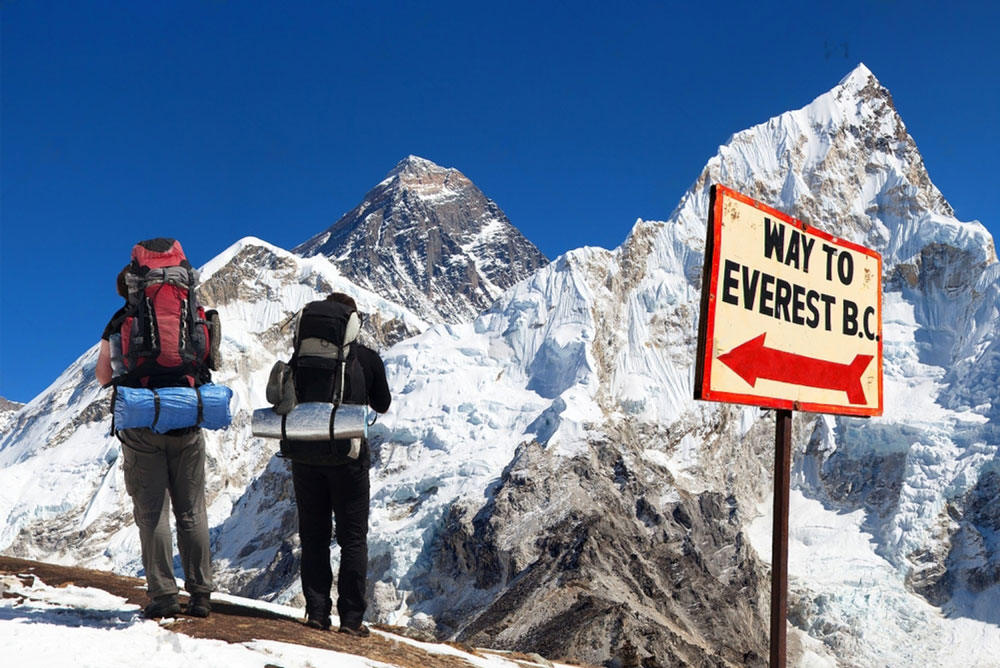
Gourmet Meals and Premium Amenities
For a luxurious trekking experience, gourmet meals and premium amenities make a big difference. At high-end lodges like Yeti Mountain Home, expect delicious, freshly prepared meals. These meals include both international and local cuisine.
These lodges offer premium amenities, such as comfortable beds, hot showers, and stunning views. This adds to the overall cost of your trek but provides a high level of comfort and enjoyment. Opting for such luxury during your Himalayan trek can make your adventure both memorable and relaxing.
How to Choose the Right Trek Based on Your Budget
Selecting the perfect trek involves balancing your adventure goals with your budget. Understanding the cost factors can help you make a valid decision. Let’s explore how to choose the right trek based on what you’re willing to spend.
Matching Your Budget with Your Expectations
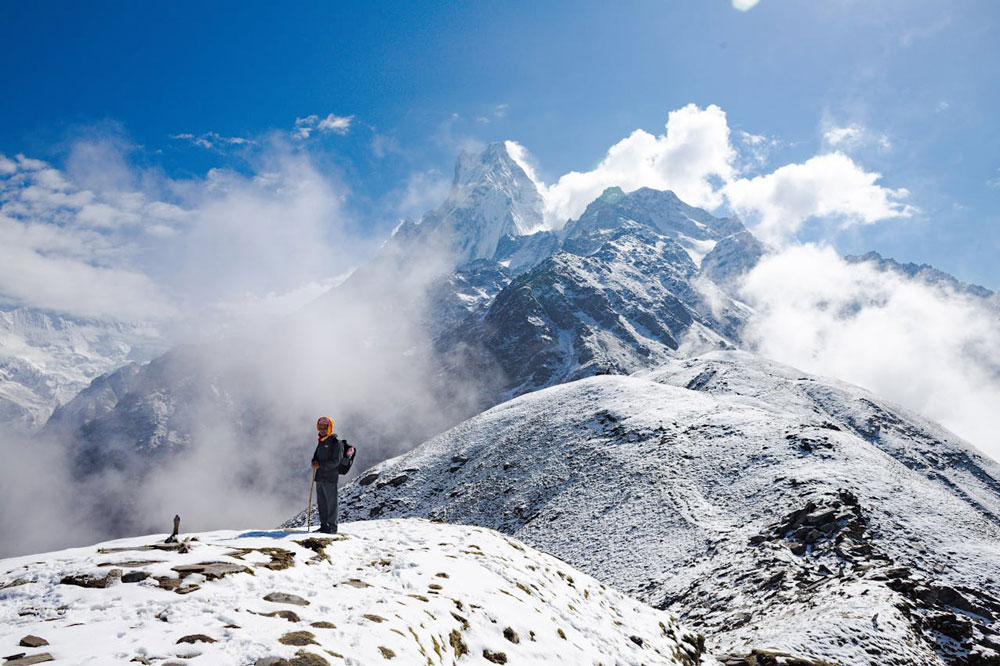
Choosing the right trek involves matching your budget with your expectations. First, decide what type of experience you want, whether it’s a basic trek or a luxury adventure.
For a budget trek, consider simpler options like the Annapurna Base Camp. If you have a higher budget, luxury lodges and guided services on the Everest Base Camp trek offer extra comfort. Balancing your cost with your desired experience ensures a rewarding adventure.
Cost vs. Experience: What’s Worth Spending On
When trekking in the Himalayas, it's important to know where to invest for a richer experience. Spending more on a knowledgeable guide can greatly enhance your adventure. Good guides offer safety, local insights, and cultural stories, enriching your journey.
Comfortable lodging and unique experiences make the trek special. These experiences include celebrating local festivals or dining with local families. Investing in these can create lasting memories and support local communities. For instance, celebrating festivals with locals offers a unique cultural experience. This is something that typical trekking doesn’t provide.
Planning and Booking Your Himalayan Trek
To ensure a smooth and enjoyable trekking experience, planning and booking are crucial steps. Carefully consider your options and make valid decisions. Here’s what you need to know about preparing for your Himalayan adventure.
Package Deals vs. Custom Treks

When deciding on your Himalayan adventure, consider whether to choose a package deal or a custom trek. Package deals often offer a set itinerary with clear costs, making budgeting easier. These packages usually include essentials like permits, local guides, and accommodation. However, they may not always fit your specific needs or interests.
Custom treks allow for a more personalized experience. They let you choose your route, accommodations, and activities. This flexibility can enhance your trek but may increase costs. Balancing the total costs with your desire for a unique adventure will help you decide which option best suits your needs.
Conclusion
Planning a trek in the Himalayas involves understanding various costs to ensure a smooth experience. Each element from permits to transportation adds to the overall cost to trek the Himalayan region. Remember, investing in quality services can greatly enhance your trekking adventure. Unique experiences also contribute to making your trek more memorable. Also, be sure to carry some spare money with you.
Now is the perfect time to start planning your Himalayan trek.
Book now to secure your spot and enjoy a truly unforgettable journey.

